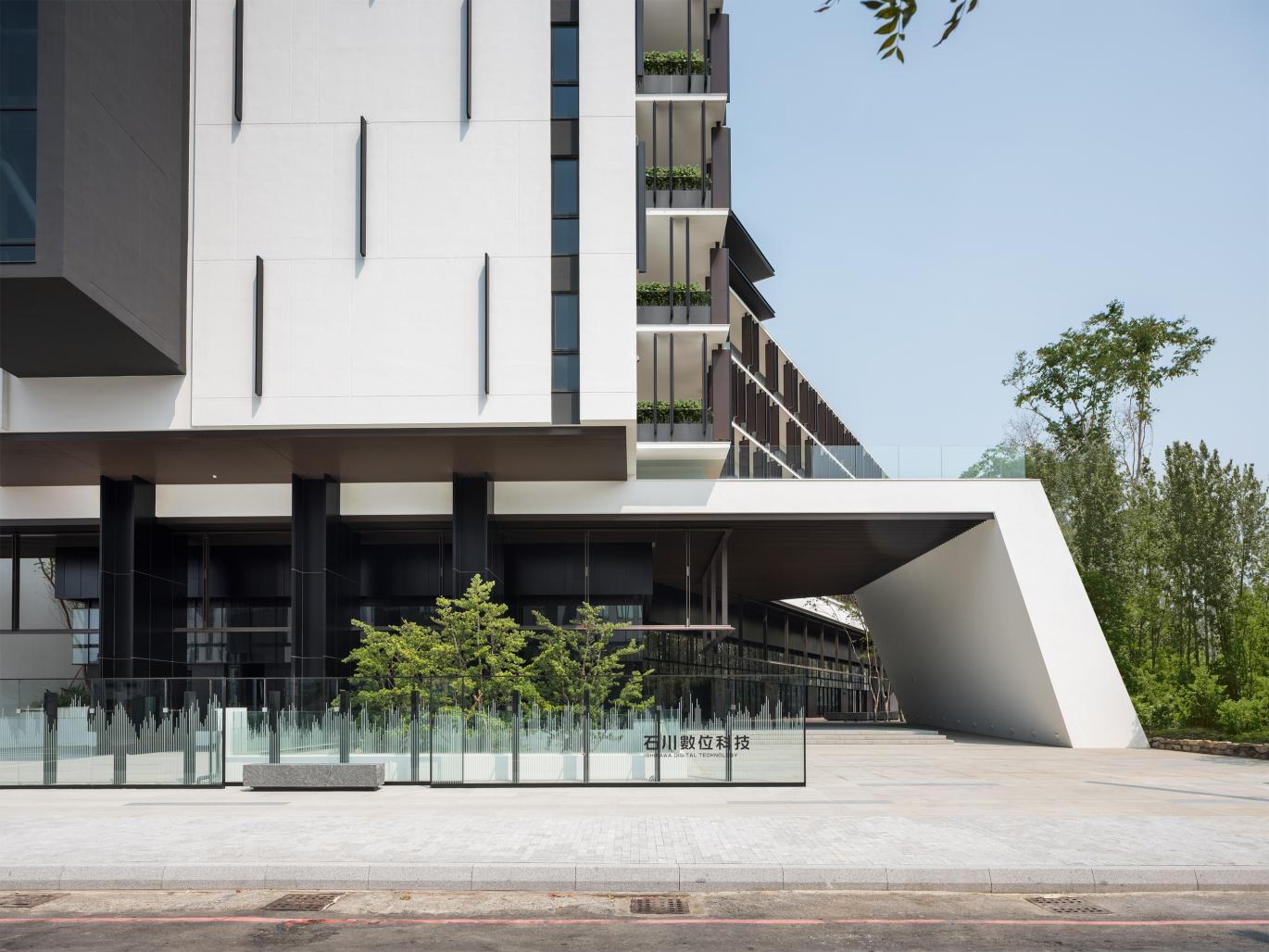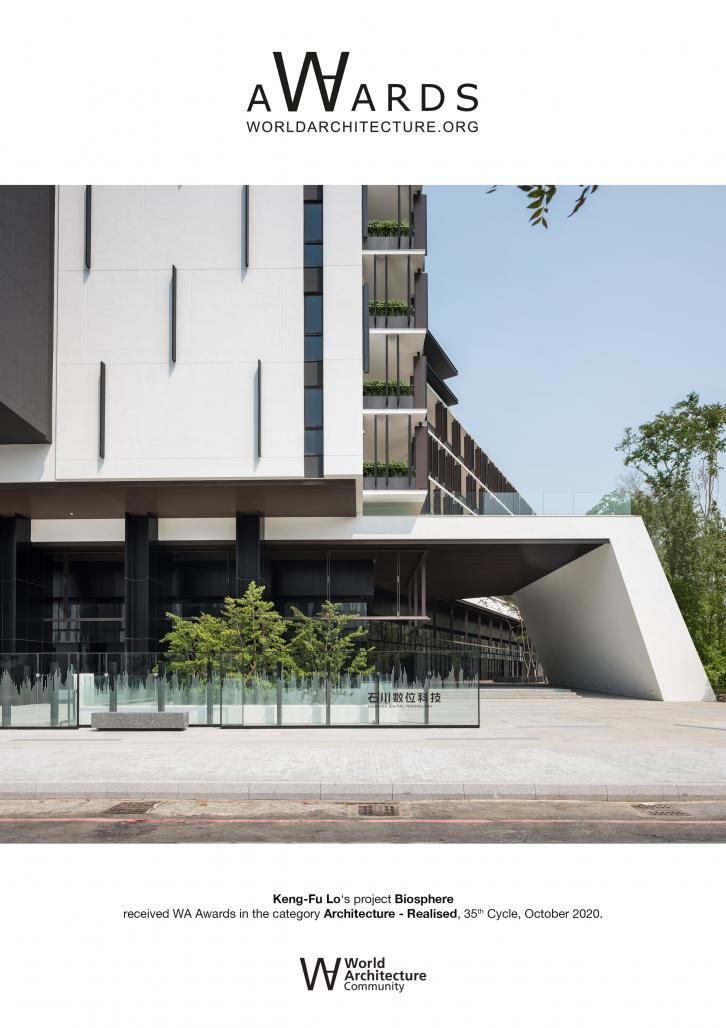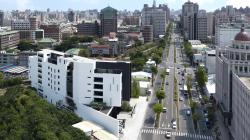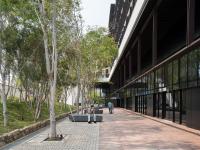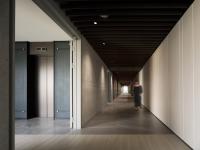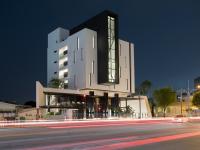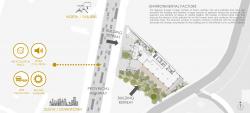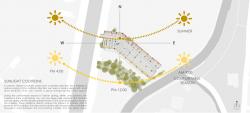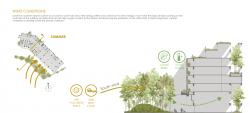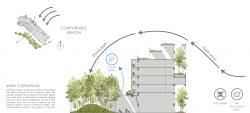The project is located in the south and close to the north-south provincial highway in Taiwan. The narrow plot is less than 30 meters wide so space constraints are something that had to be accounted for. The site is hampered by noise from the provincial highway, air pollution, and concerns about employees and guests transiting to the office. Climate change and global warming are an increasingly urgent issue, but the trend of people concentrating in urban areas is unavoidable. This project continues the trend of trying to incorporate as many sustainable and eco-friendly principles as possible. People here tend to work overtime every day and that has an impact on their psyche. We set out to design a space that reminded people of the nature that is around them but that they don’t notice.
The building was stacked back to the back, hoping to create a focal point around the openness of the building's entrance. The building also has a large number of suspended elements, deep balconies and sun visors. All of these components help to decrease the temperature inside the building. The windowed area in the west was reduced in size to decrease the energy usage from air conditioning. The windows along the front side were positioned in such a way that as the sun moves through the sky, a path of light can be seen moving through the office. This helps remind people in an office about the passage of time during the day.
The color of the building and the large amount of greenery in the environment are intertwined with the greenery of the property to create a coordinated and friendly image of the entrance. The corridor of the entrance is surrounded by a high degree of natural sloping embankments and densely planted trees. The exterior is dotted with stone chairs. During times of high stress, the employees of the office can take a walk outside and feel like they have strolled into another world.
By abandoning the traditional Asian model of architecture, we create a structure that is symbiotically linked to the environment. Sustainable while being a place for many generations of people to work.
2018
2020
Taiwan is in a subtropical environment. We changed the concept of the traditional Asian building by transforming waterproof tiling into a waterproof coating and applying it to the exterior. This makes the exterior 2500x more hydrophobic while still allowing oxygen into and out of the building. This also solves the problem of unclean water coating the outside of a project creating a living building that breathes.
In summer, Taiwan’s sunshine comes from a northerly direction. For the building, we need a service space with small area windows, that can create a good energy-saving office space. The building has a deep balcony and sunshade to the south. The bonsai trees on the balcony gives the building good shade. Through the vents on the underside of the glass handrails, the seasonal ventilation enters the room, which greatly reduces the effect of the ambient temperature on the interior.
Southern Taiwan is famous for poor air quality in the winter brought by the northerly wind. The densely planted forest area in the south allows the north wind to generate a naturally sinking micro cyclone after crossing the volume of the building. After the air flow is filtered by the densely planted forest, a relatively healthy and comfortable outdoor air quality is formed.
Many mounds were used to block the 70dB noise from the highway. In addition to the natural bird calls and insects, a light background music is also set up in the forest to cover the noise of the road with a slightly higher 2dB sound.
Chain10 Architecture & Interior Design Institute
Biosphere by Keng-Fu Lo in Taiwan won the WA Award Cycle 35. Please find below the WA Award poster for this project.
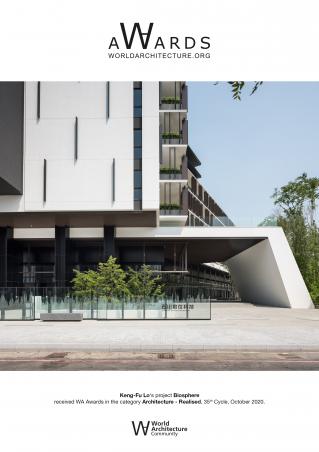
Downloaded 9 times.
Favorited 1 times
